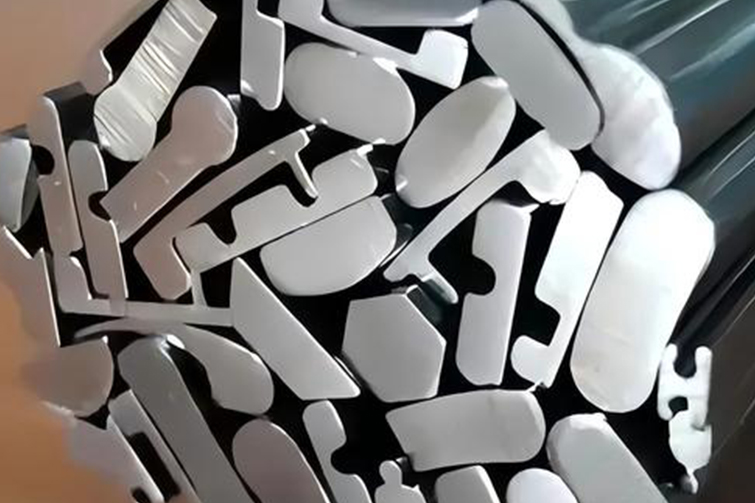

The Pinnacle of Precision: Unraveling the Challenges in Profiled Steel Fabrication
Walk through any modern city, and you'll be surrounded by the artistry of profiled steel—from the sweeping curves of iconic skyscrapers and the complex latticework of bridges to the custom frames of high-end automobiles. Unlike standard beams and channels, profiled (or shaped) steel refers to any steel section that has been custom-designed into a non-standard, often complex, geometric form.
While the results are stunning, the journey from a digital design to a physical masterpiece is fraught with challenges. Profiled steel fabrication is a discipline that pushes the limits of material science, machinery, and human skill. The difficulties are not merely obstacles; they are the very factors that define this high-stakes field.
Here are the primary challenges in profiled steel fabrication:
1. Material Behavior and Internal Stresses
The Challenge: Steel is not a passive material. It has a "memory" and a tendency to return to its original state. During cutting, bending, and welding, internal stresses are introduced. With simple shapes, these stresses are manageable. However, in complex profiles with asymmetric designs or tight radii, these stresses can become severe and uneven.
The Consequences:
- Springback: Perhaps the most significant issue in bending. The material elastically attempts to return to its original shape after being formed, leading to inaccuracies in the final angle or curvature. Compensating for springback requires extensive experience and sophisticated software simulation.
- Distortion: During welding, the localized intense heat creates expansion and contraction. In a complex profile, this can lead to twisting, bowing, or buckling of the entire structure, rendering the component unusable.
2. Complex Programming and Setup
The Challenge: Fabricating a profiled steel component is not a simple, repetitive task. Each unique shape requires a custom program for CNC (Computer Numerical Control) machines, be it for laser cutting, punching, or bending. The setup of tools, dies, and fixtures is often highly complex and time-consuming.
The Consequences:
- High Setup Time: For a one-off or small-batch production, the time and cost required for programming and setup can be disproportionately high compared to the actual fabrication time.
- Risk of Human Error: A single error in the CNC code or an incorrectly calibrated tool can lead to a cascade of failures, wasting expensive material and machine time.
3. Limitations of Machinery and Tooling
The Challenge: Standard fabrication machinery is designed for common operations. Profiled steel often demands the impossible from these machines—requiring bends beyond standard tooling limits, cuts at impossible angles, or the processing of high-strength steels that wear down tools rapidly.
The Consequences:
- Tooling Wear and Tear: Complex shapes and harder steel grades accelerate the wear and tear on cutting blades, punches, and bending dies, increasing operational costs.
- Geometric Constraints: A press brake, for instance, has limits on the length, thickness, and angle of the bend it can perform. Designing a profile that exceeds these physical machine limits is a common pitfall.
4. Stringent Dimensional Accuracy and Tolerances
The Challenge: Profiled steel is rarely a standalone piece; it must fit perfectly with other components in a larger assembly. A custom architectural facade panel or a critical aerospace bracket must adhere to incredibly tight tolerances, sometimes within a fraction of a millimeter.
The Consequences:
- Rework and Scrap: Even a minor deviation can make the part unfit for purpose. The cost of rework or, worse, scrapping a large, expensive piece of profiled steel is a constant threat.
- Complex Inspection: Verifying the dimensional accuracy of a complex 3D profile is not straightforward. It requires advanced metrology equipment like 3D laser scanners or Coordinate Measuring Machines (CMM), adding time and cost to the quality control process.
5. The High Cost of Expertise and Material
The Challenge: This is not a job for beginners. Successfully navigating the aforementioned challenges requires a team of highly skilled engineers, programmers, and welders. Furthermore, profiled projects often use specialized, high-performance steel alloys, which are costly.
The Consequences:
- Prohibitive Cost for Prototyping: The high cost of labor, material, and machine setup makes iterative prototyping and design changes very expensive.
- Knowledge-Intensive Process: The entire fabrication process is dependent on human expertise to make critical decisions at every step, from selecting the right fabrication sequence to implementing specialized welding techniques to control distortion.
Conclusion: A Symphony of Precision
The fabrication of profiled steel is a demanding symphony where material science, advanced machinery, and human skill must perform in perfect harmony. The challenges are significant—from taming the internal stresses of the steel to mastering the capabilities of CNC machinery and upholding microscopic tolerances. Overcoming these hurdles is not just about avoiding failure; it is about achieving the level of precision and quality required to bring the most ambitious and intricate architectural and engineering visions to life. It is a testament to the fact that in the world of metalworking, the most beautiful and functional forms are often the most difficult to create.



